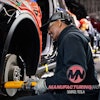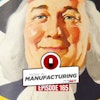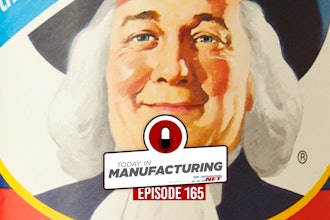
Deublin
The Basics of Electrical SLIP RINGS
E n g i n e e r e d f o r P e r f o r m a n c e
W
HITE PAPERwww.deublin.com
DEUBLIN The Basics of Electrical Slip Rings www.deublin.com2
OVERVIEW
At the heart of any automation system, electrical slip rings enable the transmission of current from a stationary device
to a rotating one. They are used for just about any piece of machinery with a rotating device that needs power and
data connectivity. As a result, electrical slip rings can have a significant impact on equipment reliability, operation,
and performance.
Electrical slip rings can be specified to meet a variety of customer requirements, ranging from electrical power,
communication protocols and operating temperatures to mechanical vibration and shock requirements. These
electromechanical devices may be used in a variety of applications including semiconductor production equipment,
wind turbines, industrial automation equipment, directional drilling machines, and robotics.
In recent years, sensors have been adopted on a larger scale across vertical markets including industrial applications,
driven by the Internet of Things (IoT) and Industry 4.0, where huge amounts of data are collected and shared between
connected devices. These connected machines help businesses improve their productivity and efficiency by enabling
real-time monitoring and control.
The connectivity trend within the industrial automation marketplace is driving changes at the component level, and in
particular, slip ring products for power and data connectivity. While it is all about automation, whether in a traditional
industrial environment or a high-tech application, the Industrial IoT (IIoT) trend is driving the need for slip rings that
meet higher data transmission rates and higher bandwidth requirements, as well as faster data protocols like Ethernet.
This new demand also translates into the need to design and manufacture slip rings that can handle both electrical
power and digital signals, while providing high data integrity through advanced RF and EMI techniques.
The demand for smart manufacturing will continue to grow over the next several years. The total available market for
electronics equipment that could be connected to the IoT is forecast to exceed $930 billion by 2021, according to
Semicast Research. The market research firm expects the number of devices connected to the IoT to reach nearly
2.5 billion in 2021, up from 1.2 billion in 2015.
DEUBLIN The Basics of Electrical Slip Rings www.deublin.com3
AN INTRODUCTION TO ELECTRICAL SLIP RINGS
An electrical slip ring acts as an electrical connection, allowing the transmission of electrical power (current), signals
or data from a stationary device to a rotating machine. It provides a physical contacting method for power or data
transfer, replacing cables, which would twist and eventually break, in rotating devices.
An electrical slip ring consists of five main components – the brush (sliding contact), conductor ring, ball bearings,
rotor, and housing. The fixed brushes make a sliding contact with the conductor ring, creating the rotating electrical
connection. The conductor ring mounts on the rotor. Lead wires, which are attached to the brush and conductor ring
internally, provide the electrical connections to either side of the slip ring. External electrical connection
options include lead wires, connectors, and terminal blocks.
Slip rings are available in a variety of sizes - typically ranging from less than one inch to several feet in diameter,
channel counts, termination types, and materials. In general, the smaller the size of the conductor ring, the less
wear on the sliding contacts, which extends the life of the slip ring. However, in some cases, a larger conductor
ring is required to allow media, such as fluids, to pass through the center via a hose or tubing. Slip rings can be
mounted with a flange, threaded rotor, slip fit over a shaft or into a shaft cavity.
Wind Turbines
Construction Equipment
Semiconductor
Industrial
Plastic Molding
Oil & Gas
Key Slip Ring Applications
DEUBLIN The Basics of Electrical Slip Rings www.deublin.com4
Brush Technologies
One of the key design characteristics that designers
need to consider in the selection of a slip ring is the
type of sliding contact or brush type. Based on power
or signal requirements, several design parameters
including current, voltage, rotational speed, operating
temperature, resistance variation, bandwidth, and
impedance play a big role in the selection of the
transmission technology. In general, there are three
types of sliding contact or brush, technologies
available. These are composite graphite, monofilament,
and polyfilament. Not all slip ring manufacturers offer
all three options.
A composite brush is made of carbon graphite
material, although it may be mixed with other
metals to increase current density. This brush type
is primarily used for providing power to motors and
in applications that require higher current and higher
speeds. A monofilament precious metal wire brush
is typically used in lower current applications that
call for low contact resistance and a clean signal
transmission. A polyfilament precious metal brush is
used in applications that need multiple contacts per
channel and extremely low contact resistance and
brush noise, targeting high data rate, real-time
control applications, and very sensitive analog signals.
Each type comes with tradeoffs, depending on the
application. For power, the biggest consideration in
the selection is not the power at load but instead
the voltage drop across the slip ring together with
the actual current flow. Voltage drop affects the
actual voltage available at load and the total power
being dissipated in the slip ring. The dissipated
power converts to heat and affects the device’s
operating temperature.
However, in data transmission, all sliding contacts
(brushes) generate some electrical resistance variation
as they rotate, which impacts the quality of the signal
transmission. The degree of variation depends on
a number of variables including the type of sliding
contact, speed, temperature, and contact force. The
use of multiple contacts for each channel is often
recommended to minimize the resistance variations,
particularly in critical applications.
Composite Brush
Monofilament Precious
Metal Wire Brush
DEUBLIN The Basics of Electrical Slip Rings www.deublin.com5
DESIGN FUNDAMENTALS AND CHALLENGES
When designing a slip ring, engineers need to account for a variety of factors depending on the application. These
include RF shielding, mixed signal handling, contact resistance, and high frequency impedance matching. Other top
considerations include operating temperature, product life cycle, environmental conditions, and packaging constraints.
In particular, one of the biggest challenges in a design with high bandwidth requirements is electromagnetic interference
(EMI). As the industrial market becomes ever-more connected to the internet, Ethernet and Ethernet-type signals need
to transmit along with power through the slip rings. These signals can be very sensitive to outside electrical interference,
particularly from the power channels, which can generate EMI in motor applications.
This requires appropriate RF design techniques to ensure that EMI does not negatively affect data integrity. Engineers
must use good RF shielding techniques and physical isolation between EMI sources to minimize the interference from
nearby sources. It is important for the shield to have a separate channel within the slip ring to complete the electrical con-
nection between the rotor and stator shield. This separate channel allows the shield energy to have a good path to ground.
To maximize data integrity, one of the key parameters to consider is electrical brush noise – a measurement of contact
resistance for each electrical channel as the slip ring is rotated. The quality of the data signal transmission – measured
in packets lost per million – also should be reviewed.
Designers also need to consider environmental characteristics, which can have a big effect on the sliding contacts.
These include ingress protection levels, and shock and vibration that impact sealing requirements, as well as the type
of sliding contact technology and position of the contacts.
Slip rings are available in both standard and custom configurations. Off-the-shelf products are primarily used for basic
applications, while custom designs are often required for critical applications that need to meet specific performance
and operating life requirements.
The key design characteristics for the selection of a slip ring include the following:
Features: Questions:
Transmission (brush) technology: What is used to transmit the power or signal from the stationary source to the
rotating machine or equipment?
Connectivity:
Where and how does the slip ring interface and connect with the system on both
the stationary and rotating side?
Operating speed: What is the rotational speed (RPM) of the unit?
Enclosure:
What materials and sealing are used to ensure the slip ring performs in
the environment?
DEUBLIN The Basics of Electrical Slip Rings www.deublin.com6
Ten Questions to Answer for a Successful Project
To ensure a successful design, engineers need to answer several questions around four key requirements - transmission,
connectivity, enclosure type, and speed - to select the right slip ring for their design and application. Here are ten questions
that should be discussed with your slip ring manufacturing partner.
Transmission
1
2
• How many channels do you need?
• What is the voltage and amperage of each channel?
• What data protocol is being used?
• How does the unit connect to your system – connectors or lead wires?
• Will the slip ring need to be grounded?
• How will the slip ring mount to the system?
Enclosure
3 • What is the operating environment? Does it require sealing to keep out contaminants? • What types of media such as water, dirt, mud, or other atmospheric conditions need to considered?
Speed
4 • How fast is the unit rotating? Will the unit change direction? • Is there a duty cycle requirement?
Connectivity
DEUBLIN The Basics of Electrical Slip Rings www.deublin.com7
THE DEUBLIN APPROACH
Leveraging its expertise and technologies in the manufacture of rotary unions for high performance and rugged
applications over the past 70 years, Deublin offers electrical slip rings that use proven technology for both its standard
and custom products that deliver the highest quality for high-performance applications. These slip rings meet a variety
of voltage and current, operating temperature, storage temperature, acceleration, and data transmission, as well as
mechanical shock and vibration requirements.
Providing high-quality rotary transmission of electrical signal and power, all of Deublin’s slip ring products are
100-percent tested prior to installation in the field. Deublin’s products can be used in a variety of high performance
applications including industrial automation equipment, wind turbine pitch systems, semiconductor production
equipment, plastic molding machines, directional drilling machines, printing systems, satellite communications,
food & beverage machines, industrial washers, and welding systems.
Deublin’s engineers work closely with its customers to understand their applications, and to ensure that the slip
ring solution optimally meets the application requirements for performance and environmental specifications.
No opportunities are too small to consider.
DEUBLIN The Basics of Electrical Slip Rings www.deublin.com8
In addition, Deublin employs three types of sliding contact or brush technologies to transmit data and power,
depending on the application needs, unlike many other suppliers that offer only one or two options. Solutions can
be designed with one brush technology or any combination of the three. These technologies include monofilament,
multi-fiber precious metal, or carbon-based graphite, copper/graphite, silver/graphite options. As examples:
Brush Technologies Transmit Data and Power Application Needs
A composite graphite brush with a gold-plated copper ring targets
applications such as 3-phase AC motors that require:
• Higher current – typically more than 30 amps and up to 250 amps
• Robust for vibration
• Higher speeds of up to 1500 RPM
• Life cycle up to 100 million revolutions
A monofilament precious metal brush with gold-plated copper
ring is used in 24-volt applications that require:
• Lower current – generally less than 30 amps
• Low contact resistance
• Clean signal transmission for 24-volt devices, analog signals
• Life cycle of >60 million revolutions
A polyfilament precious metal brush with a gold-plated copper
ring is best suited for high data rate applications that require:
• Multiple contacts per channel
• Extremely low contact resistance and brush noise (<5 milliohms)
• High data rates and real-time control of digital signals at
100 Mbits/s and higher
• Life cycle of >150 million revolutions
• Digital Protocols: Ethernet, EtherCat, Profinet, Profibus, CANbus,
CANopen, Drive CLiQ, RS232, RS422, and RS485
• Analog Signal Support: Includes thermocouples, strain gauges,
vibration sensors, optical encoders, and resistive sensors
DEUBLIN The Basics of Electrical Slip Rings www.deublin.com9
Advantages of the Deublin SLM Series Slip Rings
Deublin offers standard, off-the-shelf products that are used for basic applications, including its new SLM Series slip
ring. The standard product line offers a modular or configurable design to meet specific requirements such as multiple
electrical channels and current capability, and a quick lead time. Options are available for mounting connections,
connectors, and enclosures.
Key Capabilities
• Voltage: Up to 480 Volts AC (single or three phase) or DC.
• Current: Up to 10 amps AC or DC.
• Channels: Up to 15.
• Signal types: Analog signals such as sensors, thermocouples, audio, and video, and digital signals such as
Ethernet, PROFIBUS, CANbus, RS-232, RS-422, RS-485 and other logic control.
• EMI shielding: Shielding of analog, digital, RF, and microwave signals to prevent crosstalk with other signals
and/or AC/DC power.
• Electrical Connection: Cables/leads (length as specified by the customer), and circular industrial or military connectors.
• Mounting: Flanged rotor mount or stub rotor mount. Through bore slip ring is optional to allow line(s) for other
media to be routed through the center of the slip ring.
• Enclosure: Options include stainless steel or anodized aluminum for the exterior and IP ratings up to IP67 to meet
a variety of environmental requirements. IP54 is standard for all products.
• Rotational speed: Up to 250 RPM.
• Operating life: Up to 100 million revolutions.
• Operating temperature: -40 °C to +70 °C. (Extended temperature ranges are available for custom applications.)
• Ingress protection rating: Up to IP67 or NEMA 12.
• High shock and vibration resistance.
• Electrical brush noise: Below 5 milliohms peak-to-peak.
• Packet loss: Typically as low as 20 packets per billion (ppb).
However, there are critical applications that often require a custom-tailored slip ring to meet specific performance
and life-cycle requirements. These custom requirements may include a mix of analog and digital data transmission,
extreme temperature resistance, small packaging for space-constrained applications, integrated slip ring and rotary
union assemblies, or unique electrical connection methods.
The foundation for Deublin’s custom design products are building blocks of proven and qualified components, and
advanced RF and EMI techniques to ensure high data integrity. This extensive range of building blocks meet a host of
design challenges ranging from miniaturization and special packaging requirements to RF shielding and mixed signal
handling capabilities.
DEUBLIN The Basics of Electrical Slip Rings www.deublin.com10
Integrated Designs
Leveraging its expertise in rotary unions, Deublin also provides integrated rotary joints that combine the electrical slip
ring and rotary union into an integrated “plug-and-play” unit with up to 60 channels for customers who require both
electrical and pneumatic (hydraulic/air/water) connections in space-constrained applications. It also eliminates the
need for two rotors, two sets of bearings and two housings, reducing the overall package size significantly.
Deublin’s rotary unions offer either mechanical seal or soft-seal technologies, while most other suppliers only
provide a soft-seal version. For most applications, the mechanical seal unions deliver superior performance with
lower torque and longer life.
The bundling of the rotary union and slip ring also ensures that the design is optimized for the application, reducing risk
during the early design phase. Other advantages include a reduction in installation and maintenance time, eliminating
the need to plug or disconnect multiple cable connections and hose fittings separately. Customers also benefit from
sourcing the slip ring and rotary union from a single supplier.
CONCLUSION
When selecting a slip ring product, engineers need to look closely at several areas of design – transmission,
connectivity, operating speed, and enclosure options. They also should consider manufacturers that continue to
improve and implement new technologies and processes to meet increasing demand for higher data speeds, while
ensuring that the slip ring can handle both analog and digital signals.
Also, look for slip rings that are easy to integrate into your design. This means off-the-shelf parts that offer configurable
and multiple options for transmission technology, connectivity, packaging and enclosures, or custom designs that can
combine both the slip ring and rotary union in a single housing to ensure optimal integration. Sourcing from a single
supplier that offers both standard and custom products streamlines the design and purchasing process, speeding up
time to market.
In addition, the quality of the product and supplier are important factors to ensure stable and secure design and supply
chains. Pre-validation and pre-testing of the slip ring not only ensures a high quality product that fits the application, it
also is a time-to-market advantage during the early design and development phase.
E n g i n e e r e d f o r P e r f o r m a n c e
For more information call 847-689-8600, or visit www.deublin.com






















